OPD: Measured in minutes
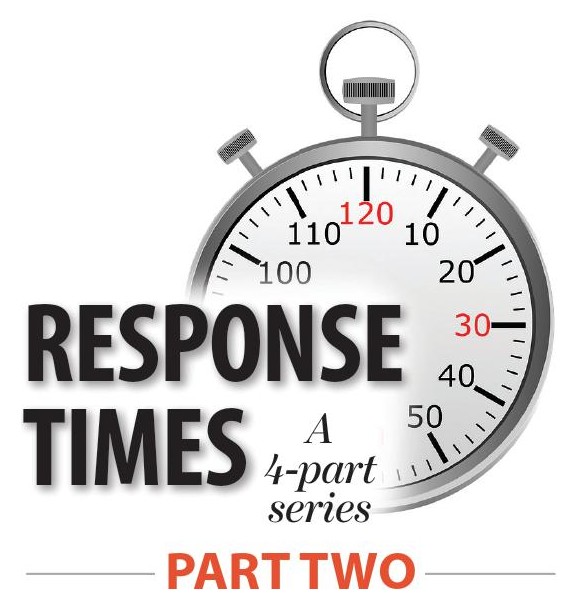
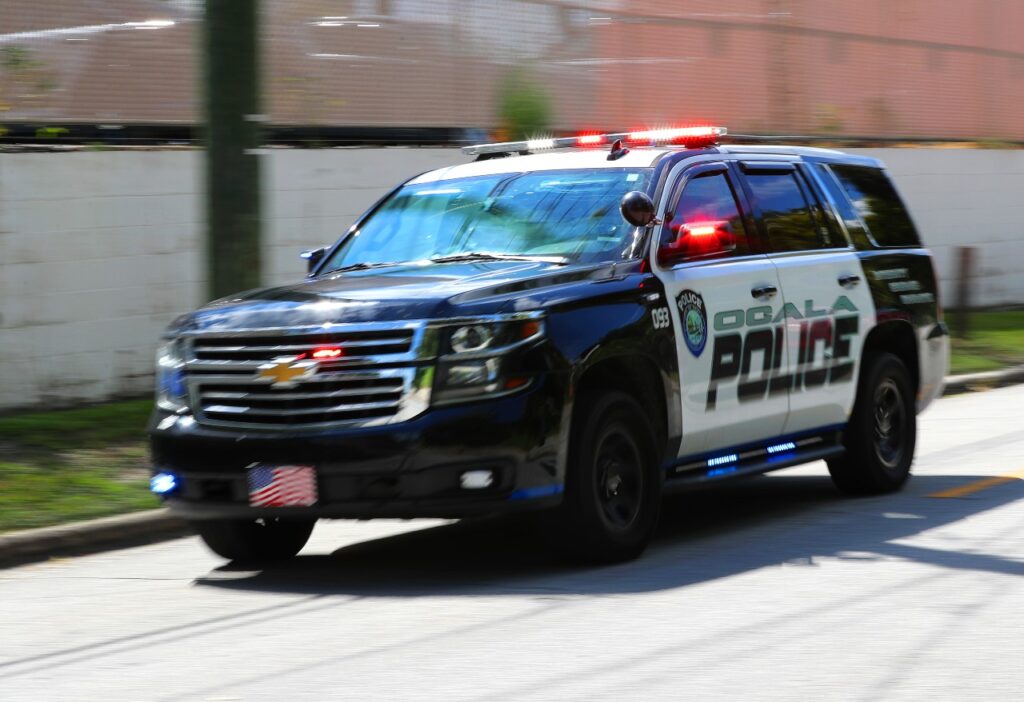
Editor’s note: This series will explore the response times of Ocala Fire Rescue, Ocala Police Department, Marion County Fire Rescue, and the Marion County Sheriff’s Office.
Officials will explain how their different departments track, analyze, and use response times as a tool to measure the success of their departments. Additionally, response times from each department will be examined.
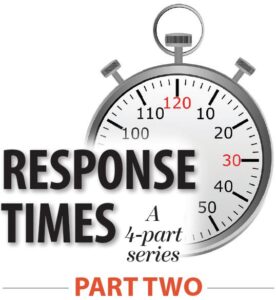 The Ocala Police Department’s goal is to get to every high-priority 911 call in less than three minutes.
The Ocala Police Department’s goal is to get to every high-priority 911 call in less than three minutes.
It’s a goal they have met 74% of the time so far this year. Last year, OPD hit the goal 77% of the time and 75% of the time in 2019.
“We like to get on scene within three minutes, so it’s three minutes or less is what our objective is,” said Major Steve Cuppy with the OPD Community Policing Bureau.
But the percentages weren’t always that high. In 2018, just 45% of high-priority calls were under the three-minute mark. That’s when OPD changed what was considered a high-priority call, referred to as a priority-one call.
OPD breaks its 911 calls down into three categories: Priority one is the highest urgency, priority two is not as urgent and priority three calls is the least critical.
“Things have changed. I know in the summer of 2018, there was a change in what we determined to be a priority-one call…we had a lot of things, more things than what we should have had listed as a priority one call.”
The changes included separating reports of active crimes and crimes which occurred at an earlier time. For example, if a burglary is occurring as the 911 call comes in, that is a priority-one call. If the burglary happened the evening before it is a priority-two call.
Those changes in 2018 caused the percentages of calls OPD responded to in under three minutes to increase dramatically.
The average response time to a priority-one call went from an average of eight minutes, 12 seconds in 2016, to an average of three minutes, 18 seconds in 2020.
While fire departments have nationally prescribed standards for response times, no similar standard exists for law enforcement. Still, they use the priority system to measure their performance.
“The easiest way to understand it is a priority-one call would be any time we’re having to drive to something with lights and sirens. A priority two call is obviously less priority, as it does not require lights and sirens. It could be, as an example, you come home to discover your house was broken into. Priority three calls are the lowest level…they’re more a civil matter,” Cuppy said.
While the department scrutinizes its priority-one calls the closest, the goal is to improve response times across the board.
“Chief (Mike) Balken does emphasize the importance of priority two calls as well, but priority one calls are clearly the most identifiable,” he said.
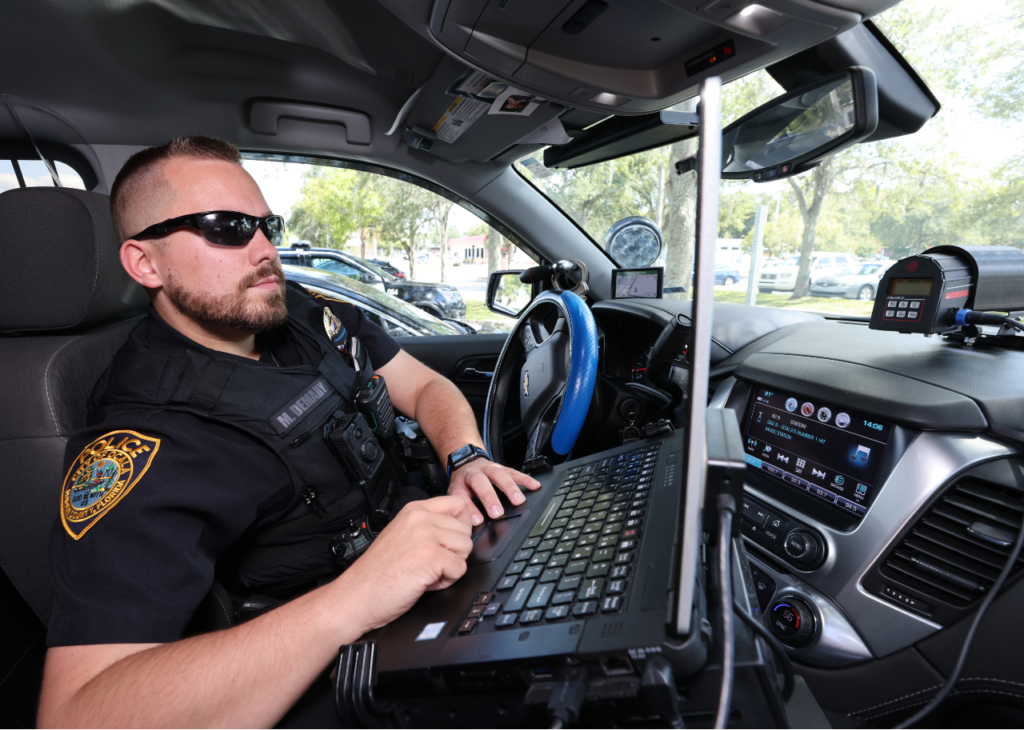
Officer Mason Demary of the Ocala Police Department looks up a call on his laptop in his patrol vehicle at the Ocala Police Department on Sept. 29. [Bruce Ackerman/Ocala Gazette]
“One of the things we added in later summer 2019 was online reporting. We’ve had it for a while, but we greatly expanded the types of calls that we could send,” Cuppy said.
Online reporting for lower priority calls has allowed officers to focus on higher priority calls.
“So clearly, when we’ve been able to expand the role of online reporting,” said Cuppy, “it has freed up some of our officers in that way for sure, which I think is another thing that’s kind of had an impact.”
However, Cuppy pointed out that the decision to add the digital option does take away from the element of personal service.
“Chief Balken has struggled with online reporting because one thing that we’re clearly giving up is customer service, in a sense. You know for the longest while we operated under the guise of ‘you call, we come.'”
Cuppy said OPD sees their heaviest call volume starting around 3 p.m., and it runs until about 8 or 9 p.m.
The department runs four 12-hour shifts during the day. The first shift runs from 7 a.m. to 7 p.m. Second shift begins at 11 a.m. and runs to 11 p.m. The third shift covers 3 p.m. to 3 a.m., and the final shift works from 7 p.m. to 7 a.m.
Cuppy said the two middle shifts include fewer officers than the other two but are designed to support the 7-to-7 shifts.
OPD divides the city into the East and West divisions, with Pine Avenue serving as a rough dividing line.
Within each division, there are seven zones, and sometimes, Cuppy said, officers in one zone respond to calls in other zones, which may increase response times slightly.
“We do try to keep people within their districts. Sometimes if they’re just overloaded too heavily in one particular district, an officer from the other district may come over to the other zone, but essentially people stay within their districts. They just don’t stay within their zones., Cuppy said.
OPD, much like other law enforcement organizations, face personnel challenges.
“Presently, we do have some staffing issues that are going on right now,” Cuppy said.
While the department only advertises seven vacancies, Cuppy noted new hires don’t start work immediately. There is internal training that can take weeks and even months to complete.
“We do have people that are in various stages of the hiring process that are ready to fill our vacancies, but we’re still dealing with the same challenges that I think, I think…agencies across the country are dealing with,” said Cuppy.
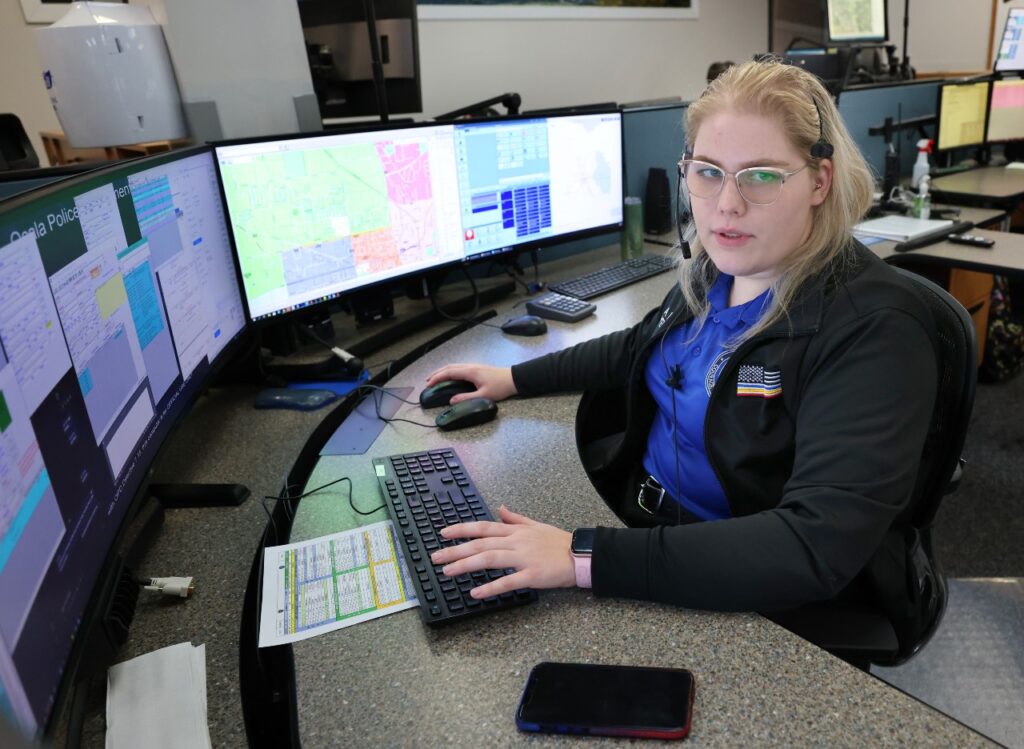
Brianna Fryer, a dispatcher, works in the communications center at the Ocala Police Department. [Bruce Ackerman/Ocala Gazette]
“One thing we’re actively looking at how to improve quality and service is hiring more non-sworn personnel to do that function.
We can expand that program greatly, which will free up officers to respond to emergency calls or to do more proactive policing in the community to try to prevent crime,” Cuppy said.
Non-sworn personnel are used in situations such as handling traffic accidents.
“You’re constantly just looking for ways to become more efficient. You know one thing that we respond to as an agency that differs from the [Marion County] Sheriff’s Department is we respond to traffic crashes and investigate our own traffic crashes,” Cuppy said. “That’s the one thing that’s a big difference. On average, we’re responding to somewhere in the neighborhood of 500 crashes a month, within the city.”
OPD is constantly seeking efficiency, he said.
The department holds bi-weekly meetings to focus on any trends or developments that stick out.
“Every two weeks we come together as an organization, and we review what has happened in the last two weeks…even maybe what’s occurred the two weeks prior to that and looking at the crimes and then developing objectives to try to address either an ongoing trend or an ongoing problem, or what are we going to do next to prevent the next type of problem that’s coming,” he said.
Cuppy said response times are just one part of making sure OPD meets the community’s needs.
“We’ve been very blessed here in Marion County where we have tremendous community support, tremendous support from the city in what we’re trying to accomplish what we’re trying to get done. And for us it really matters what kind of service we’re trying to provide everybody,” he said.





